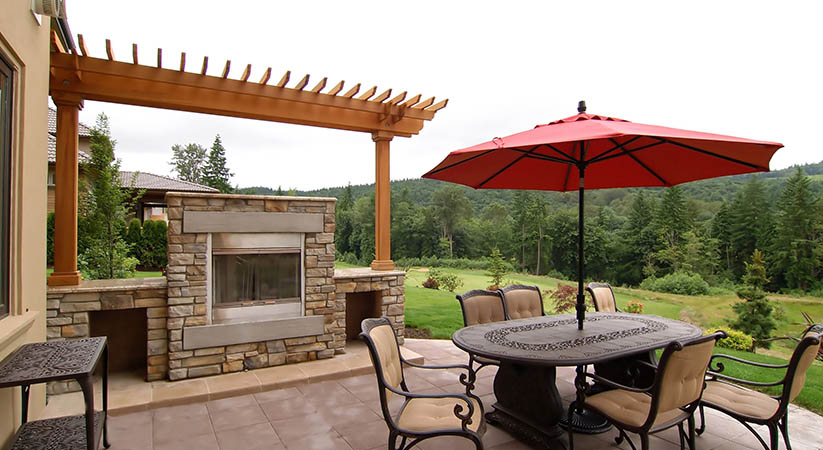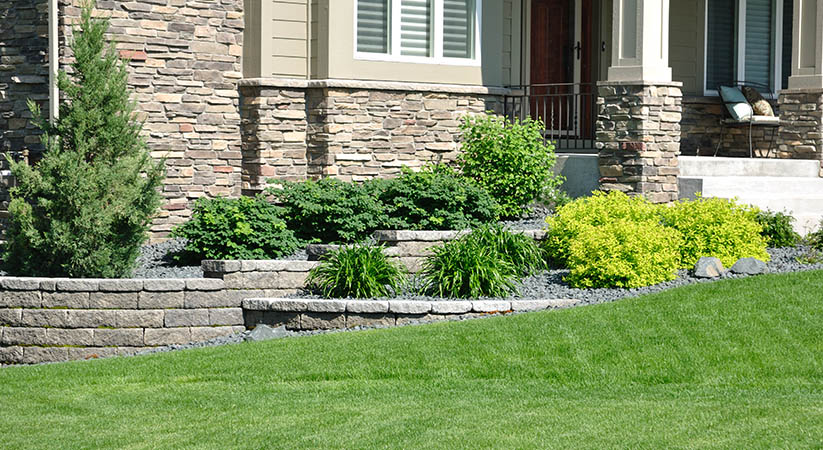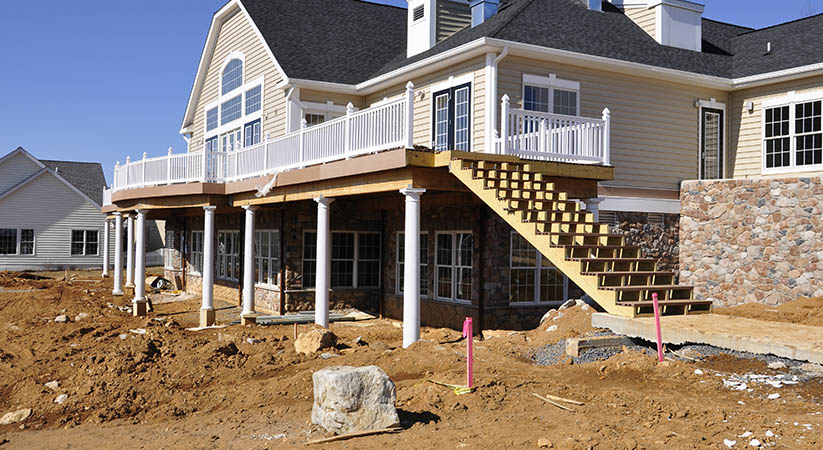Concrete patios are a fairly common feature due to their durability and reliability. Another major reason is that you can customize concrete patios according to your needs and preferences. However, this is only possible if you are using the right technique recommended by patio builders. Otherwise, some mistakes can cost you big time in terms of effort and money. So, let’s take a look at some common concrete patio installation mistakes so that you can avoid them.
Dirt Backfilling
When it comes to building a concrete patio, you should never use dirt as a base. Even though it is common sense but perhaps the most common mistake amongst homeowners. If you use dirt as a base, the concrete slabs will simply penetrate the dirt and create an uneven surface.
The reason is that dirt tends to shrink by 30% when compacted. This means that if you backfill using dirt, our hardscape will only settle 30%. As a result, this becomes an issue later on when the pavers begin to sink into the ground. Use gravel to avoid this situation.
Keep in mind that your concrete patio is only going to be as stable as its foundation or base. So, you need to use the right materials to keep the pavers stable.
Laying A Shallow Base
Many people don’t dig too deep which is a common mistake while building a patio. You might think that concrete patios do not require much depth but you were wrong. The depth of your patio will depend on its purpose. If you intend to use the patio for human traffic, you should dig around 4 inches to lay proper gravel. And for driveways and residential plots, you should opt for somewhere around 6-10 inches for driveways. Plus, if you live in cold climates, you should add an extra 2-4 inches.
Not Compacting The Base
Before you can lay concrete pavers, you should make sure the gravel base is firm, flat, and stable without any bubbles or rises. This means that you will need to properly combat the base so that you do not have any problems when it comes to installing the patio. The last thing you would want is a bumpy patio that is neither visually appealing nor easy to walk on.
That said, the best way to compact your base gravel is by using a steel tamper or a plate compactor. Keep in mind that a steel compactor is mostly used for small projects while extensive driveways, patios, and walkways require a gas plate compactor.
Improper Bedding Sand Installation
Bedding sand is a crucial part of the patio laying process. You need to ensure that the stones are firm in place and they won’t move. This means that it is yet another crucial step of the process. In addition to that, bedding sand also acts as a leveling layer to even out discrepancies in the manufactured product and gravel base. Therefore, if you were to install the bedding sand properly, you will be able to avoid voids or dips that will otherwise come up in the final product.
For bedding sand, you should perform the process known as screeding. Lay 1” inch of bedding sand and use 1” outside diameter screed bars to bring in your sand. Make sure the bars fully contact the base. Do not lay more than 1-inch of bedding sand as it could lead to wobbling or settling of the pavers.
Not Using The Click-And-Drop Method
When it comes to placing the pavers, you should be familiar with the correct way to place them. You simply cannot follow random installation methods. That said, the best method to use is the click-and-drop method. Using the method, you first place a paver in front of the previous stone and push it towards the previous stone until it makes a ‘click’ sound. When you hear the sound, it means the paver is flush with the paver behind it and you can place it.
Final Word
Laying down a concrete patio can be both exciting and slightly complicated. Make sure that you plan out the process and use the right tools. And if you find the process complicated and confusing, do not hesitate to consult patio contractors. Lagras



